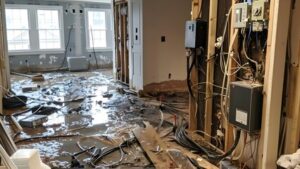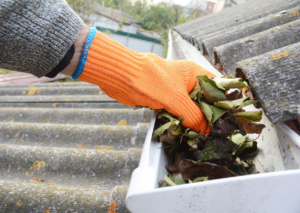Real Estate Savannah is land and any structures attached to it, such as houses, buildings, or strip centers. It is usually divided into residential and commercial categories.
Residential real estate includes new construction and resale homes. It also encompasses multi-family assets such as apartments, condos, and townhouses. Commercial real estate is used for offices, stores, and hotels and generates income by selling goods or services.

Real estate is land and everything permanently attached to it, both above and below ground. This includes natural objects such as trees and water, as well as artificial attachments like houses, buildings, roads, and fences. This definition differs from personal property, which is anything that doesn’t come with the land, such as furniture or a car.
It also encompasses rights to occupy and use the land or property, as well as the right to sell or transfer ownership. These rights can be used for residential, commercial or industrial purposes. The value of real estate typically increases over time, making it a good investment option. Real estate also provides a number of benefits, including tax advantages, low correlation to other investments and access to unique financing opportunities.
The most common types of real estate include residential, commercial and industrial. Residential real estate includes new construction and resale homes. Commercial real estate refers to office buildings, shopping centers and other business spaces. Industrial real estate includes factories and warehouses.
Each type of real estate has different rules and regulations regarding how it can be bought, sold or financed. For example, residential real estate is regulated by local and state laws. In contrast, commercial real estate is regulated by federal laws.
Investing in real estate can be profitable, but it is important to understand the basics of the industry before getting started. This includes knowing the types of real estate, how to purchase and finance properties, and how the market works. It is also important to understand the risks involved in investing in real estate, including declining resale values and potential foreclosures. To mitigate these risks, investors should seek the advice of a professional real estate investor or attorney.
Types
The real estate industry isn’t all white picket fences and two-car garages. It encompasses a vast array of properties and assets that include residential, commercial, industrial and vacant land. Real estate is also a diverse sector with its own specific rules and regulations, ranging from local to state-wide zoning laws. This industry is also constantly changing, and as technology, incomes, buying habits and lifestyles shift, the world of real estate will continue to evolve at an ever-faster pace.
Residential real estate is property used for habitation, such as homes or apartments. This category includes both resale and new construction homes, including condominiums, co-ops, townhouses, duplexes, triple-deckers and quadplexes. It also includes high-value homes, multigenerational homes and vacation homes. Residential real estate can also be found in different architectural styles, such as ranch homes, Craftsman-style homes and highly ornamented Victorians.
Commercial real estate is property that is designed to generate income, such as office buildings, shopping centers and strip malls. It can also include hospitals, hotels and rental apartment buildings. This type of real estate can be owner-occupied or leased, and it also can include retail space and warehouses. Industrial real estate is property used for the manufacturing, warehousing or distribution of goods, such as factories and warehouses. Vacant land is property that is not currently in use and may be zoned for residential, commercial or industrial purposes.
Special purpose real estate is property that has a unique function in society but does not fit into either the residential, commercial or industrial categories. This could include churches, schools and cemeteries. This type of real estate is usually owned by a government entity and overseen by the municipality.
Markets
The real estate industry is a dynamic market with many different opportunities. Investors must consider a variety of factors when selecting a property, including its location, price range, and potential future value. It is also important to understand the economic cycle and a property’s sensitivity to it. Additionally, investors must be aware of current legislation that affects CRE.
The most common way to invest in real estate is through a real estate marketplace website. These websites allow users to browse a wide range of listings and connect with sellers directly. In addition, they provide tools to help users manage their properties, such as scheduling maintenance and advertising vacancies. These platforms are popular among investors and tenants alike, as they offer a convenient and efficient way to find the perfect property.
Another popular way to invest in real estate is through syndication. This is a form of investment where a group of individuals pool their money to purchase and maintain a commercial or residential property. This method is typically used by people who cannot afford to purchase or maintain a property on their own. It is important to seek guidance from a real estate professional who can help you determine your investment goals and risk tolerance.
In New York City, the real estate landscape varies by neighborhood and borough. For example, Manhattan is an affluent and high-end market where prices are significantly higher than other areas of the city. In contrast, neighborhoods like Astoria and Flushing offer more affordable options. New York City’s diverse market highlights the importance of research when selecting a property. Investors should pay attention to reports and data from authoritative sources, such as the New York State Association of Realtors, in order to understand the current state of the real estate market.
Financing
Financing options are a vital part of real estate investing, providing investors with the funds they need to purchase and renovate properties. There are many different financing methods available, ranging from traditional mortgages to new innovations like crowdfunding. Investors should evaluate their financial situation, investment goals, and risk tolerance to choose the financing option that best suits them.
Conventional loans, such as Fannie Mae and Freddie Mac loans, are typically used to finance commercial property purchases. These loans offer competitive interest rates and lower down payment requirements, making them a popular choice for many real estate investors. Investors should shop around for the best loan terms, as they may vary depending on the type of property and location.
Private lenders are another common source of financing for real estate investments. These loans are typically short-term and high-interest, but have looser qualification criteria than traditional bank loans. Investors should carefully consider the risk involved in obtaining this type of financing, as it can be difficult to secure if you have bad credit.
Another creative financing method for real estate is to use a line of credit against an existing home equity. This allows investors to borrow against the equity they have built up in their home, while avoiding having to liquidate their existing investment properties. However, this strategy can be dangerous if you have bad credit and can only obtain financing from private lenders.
Other financing options include seller financing, where the property seller provides funding to the buyer, and lease options, where investors control a property for a certain period of time with an option to buy it at a predetermined price in the future. These strategies can help real estate investors increase their acquisition speed and scale, but they require careful evaluation of the risks involved.
Marketing
The digital marketing opportunities for real estate are many. Some are used to attract new leads, while others can help nurture existing client relationships and convert them into opportunities. Real estate digital marketing can be done through the use of websites, email, social media, and local events.
A website can showcase properties, services and expertise. It can also be used to conduct virtual tours and host Q&A sessions with interested parties. Using a website builder makes it easy to create a real estate site that’s visually appealing and user-friendly.
Email is an effective tool for nurturing leads and converting them into clients. Real estate agents can use drip email tools to send targeted, automated messages to potential buyers. They can include useful articles on buying or selling property, tips on the neighborhood and local market, and listings of current homes for sale.
Another way to boost your real estate marketing is by partnering with other local businesses. Collaborating with local vendors like lenders, title companies, home improvement contractors, and interior designers can help you reach a wider audience and establish yourself as a knowledgeable resource for local real estate.
Paid advertising can also be a great way to reach out to a specific target audience. A real estate agent can target ads based on location, age, and interest. This can be a highly targeted approach that maximizes the return on investment.


